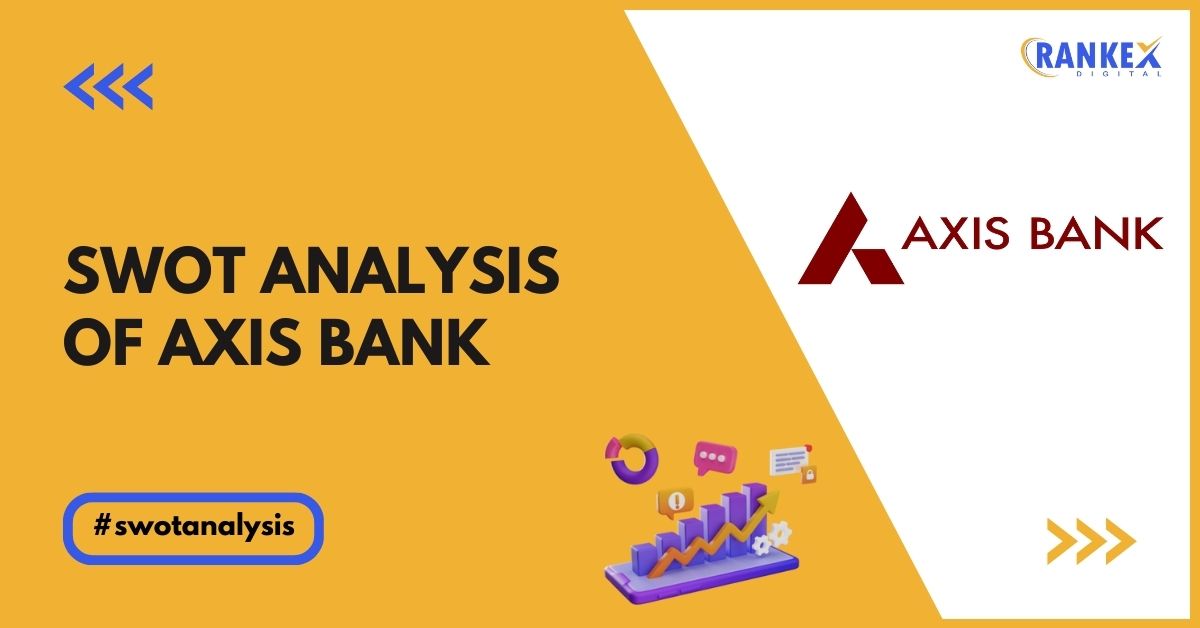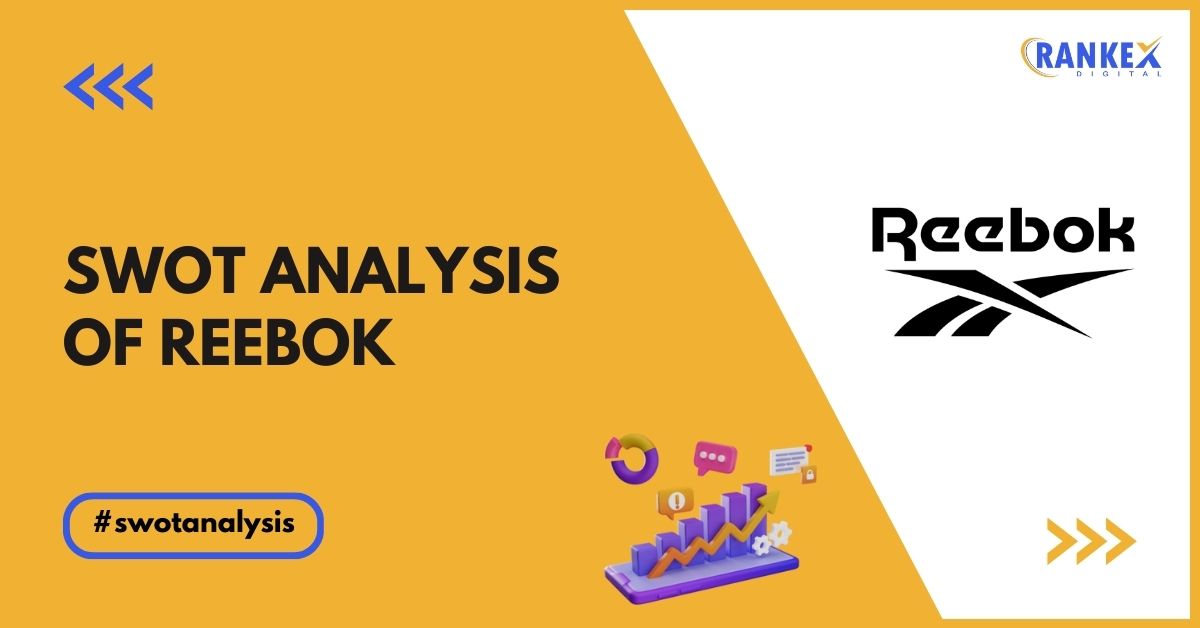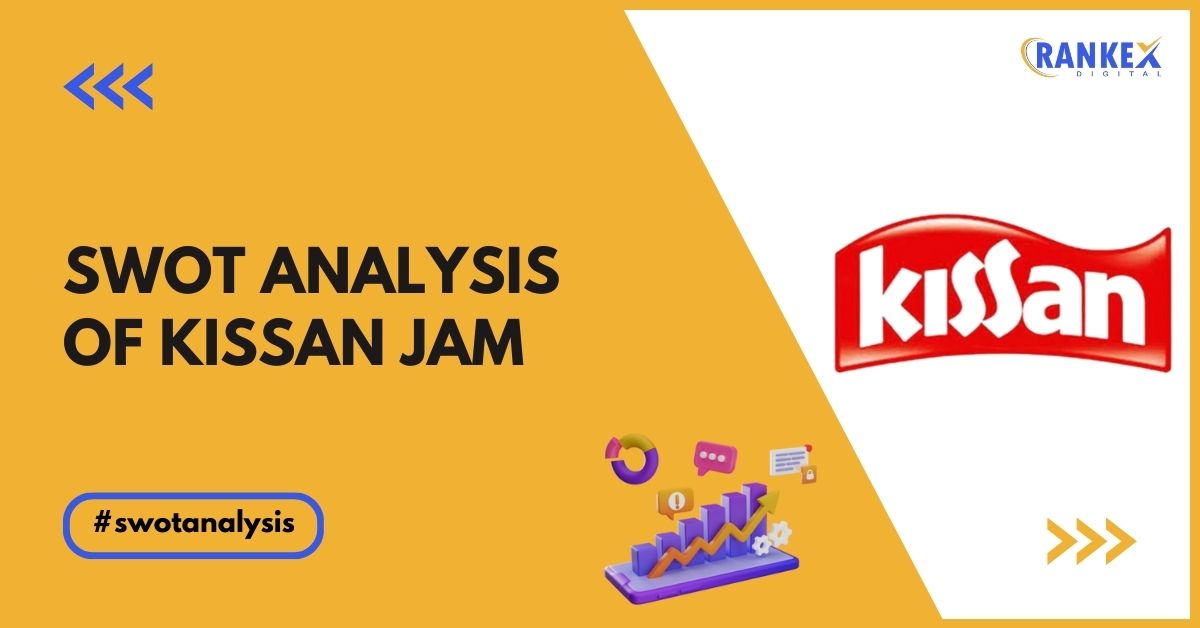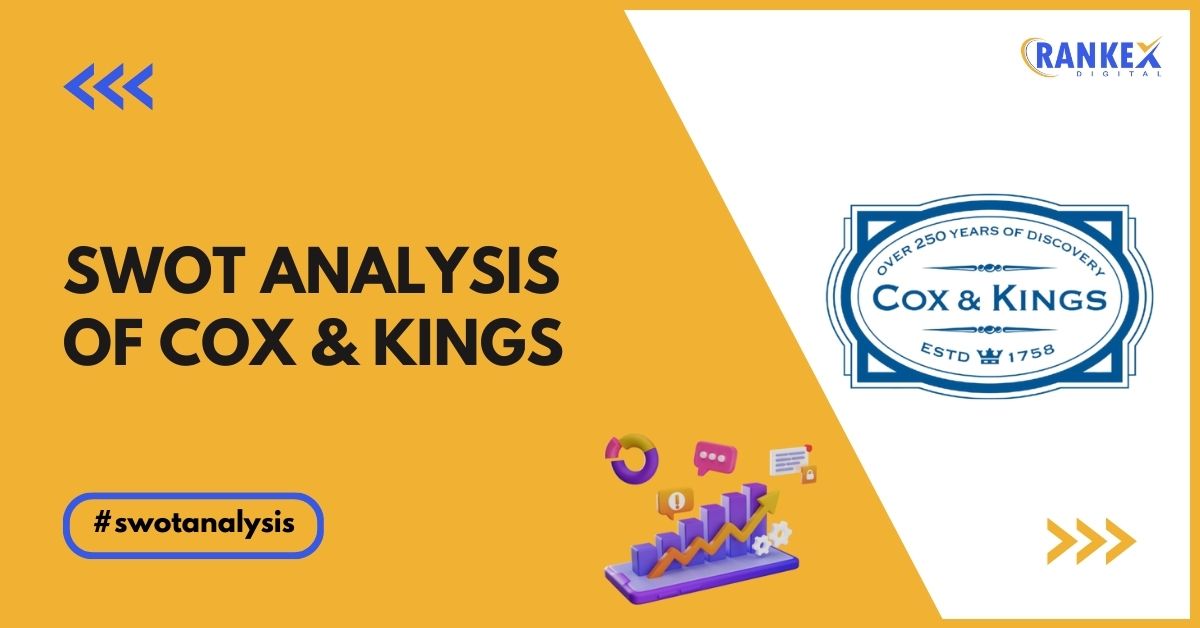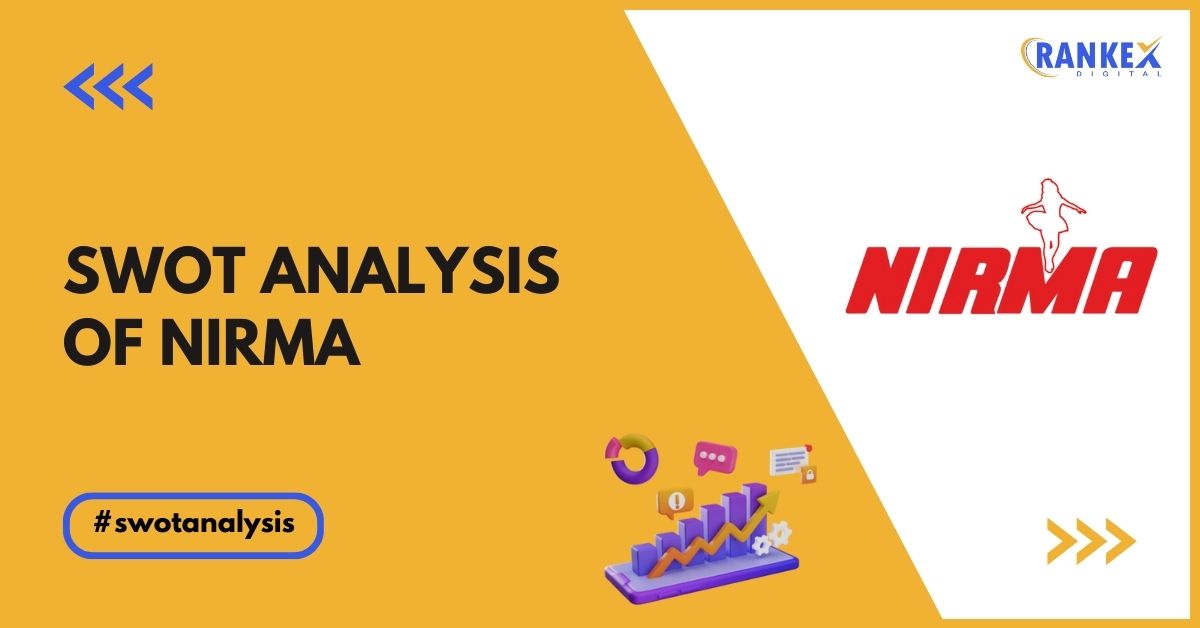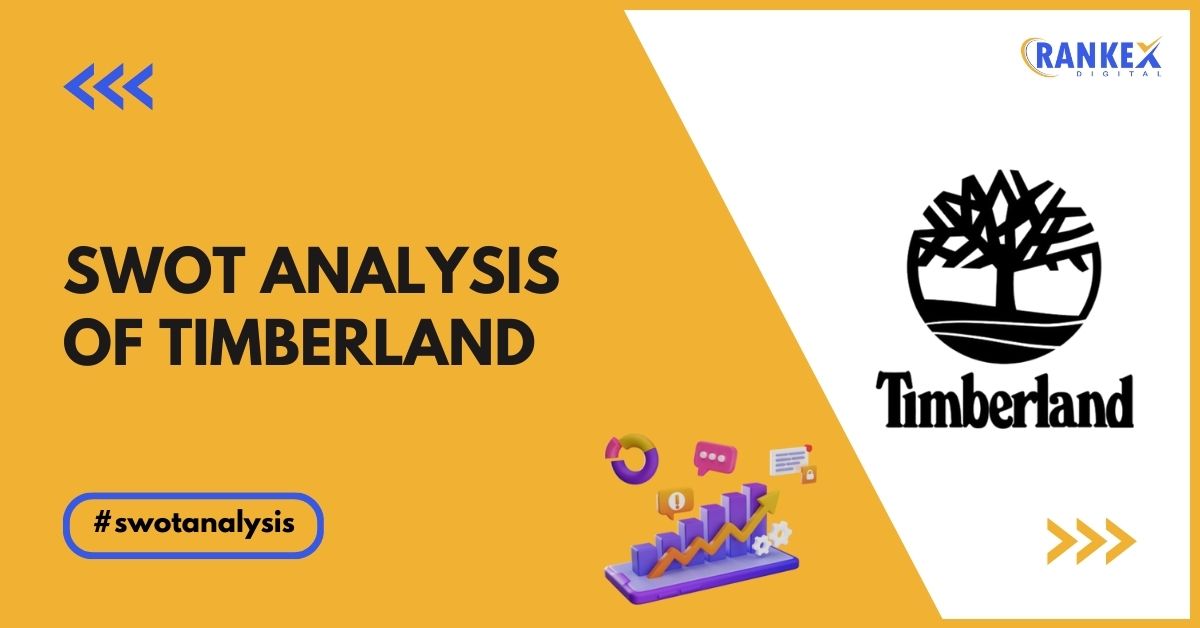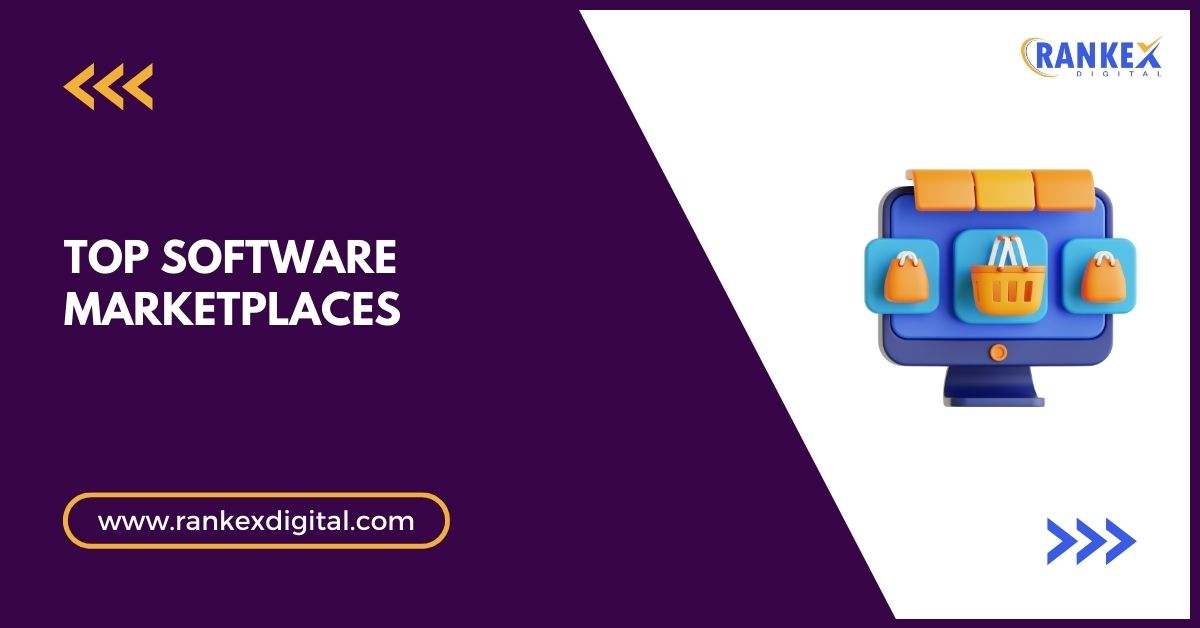Axis Bank is a leading private sector bank in India, offering an extensive range of financial services to retail, corporate, and institutional customers. Founded in 1993 and headquartered in Mumbai, the bank is renowned for its innovative approach to banking and its robust digital presence.
Known for its customer-focused services, digital banking initiatives, and wide reach, Axis Bank offers a range of financial services, including retail banking, corporate banking, and wealth management.
Key Highlights:
- Network Size: Over 4,800 branches and 17,000 ATMs.
- Digital Leadership: Recognized for top-notch internet and mobile banking platforms.
- Market Position: Among the top private banks in India, competing with HDFC, ICICI, and SBI.
In this article, we explore the SWOT analysis of Axis Bank, detailing its strengths, weaknesses, opportunities, and threats to understand its position in the highly competitive banking industry.
Table of Contents
Overview of Axis Bank
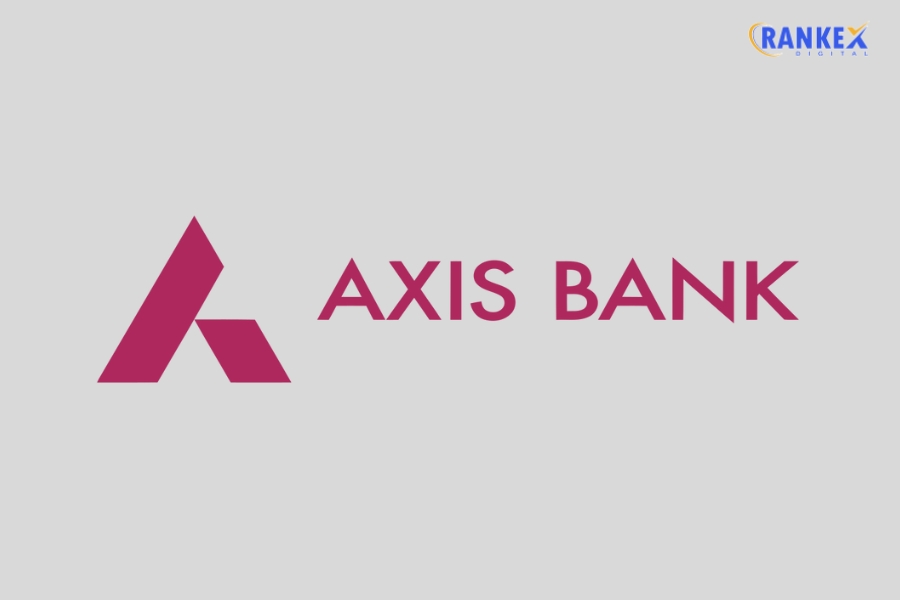
| Founder | Established by UTI (Unit Trust of India) |
|---|---|
| Year Founded | 1993 |
| Headquarters | Mumbai, Maharashtra, India |
| Industry | Banking, Financial Services |
| Annual Revenue | ₹1.07 trillion (FY 2023) |
| Number of Branches | 4,700+ |
| Market Reach | Presence in India and international operations |
Axis Bank is the third-largest private sector bank in India, offering a wide range of banking products and financial services to retail, SME, and corporate customers. With a focus on digital transformation and expanding its market presence, Axis Bank is well-positioned to capitalize on opportunities in the Indian financial sector.
Axis Bank’s Social Media Presence
Axis Bank has a robust presence across various social media platforms, allowing it to engage with customers, share updates, and promote its services effectively. The bank uses its social profiles to connect with its audience, respond to queries, and build brand loyalty.
Key Social Media Platforms:
-
Facebook
- Followers: Over 8 million
- Content: Customer-centric posts, product promotions, financial tips, and community engagement campaigns.
- Engagement: Active with regular posts and prompt responses to customer inquiries.
-
Twitter
- Handle: @AxisBank
- Followers: 1.5 million+
- Content: Quick updates on products, services, financial trends, and real-time responses to customer complaints or queries.
- Special Initiatives: Hosting hashtag campaigns for better visibility and customer interaction.
-
Instagram
- Followers: 500k+
- Content: Creative and visually appealing posts about banking solutions, lifestyle partnerships, and special offers.
- Engagement: Use of stories, reels, and influencer collaborations to target younger demographics.
-
LinkedIn
- Followers: Over 1.2 million
- Content: Professional insights, job opportunities, corporate achievements, and CSR activities.
- Target Audience: Professionals, businesses, and job seekers.
-
YouTube
- Subscribers: 300k+
- Content: Informative videos, financial education series, customer testimonials, and product explainers.
- Notable Campaigns: Step-by-step guides on digital banking features and highlights of their CSR initiatives.
Impact of Social Media Presence:
- Customer Engagement: Social platforms allow Axis Bank to resolve queries quickly, improving customer satisfaction.
- Brand Visibility: Consistent posting and interaction make Axis Bank a recognizable name in the financial industry.
- Promotional Campaigns: The bank leverages these platforms for targeted campaigns that drive traffic to its digital services.
Enhancing its social media strategies with more interactive content, live sessions, and user-generated posts can further strengthen its online presence. Let me know if you’d like a deep dive into specific platform performance or campaign analysis!
SWOT Analysis of Axis Bank
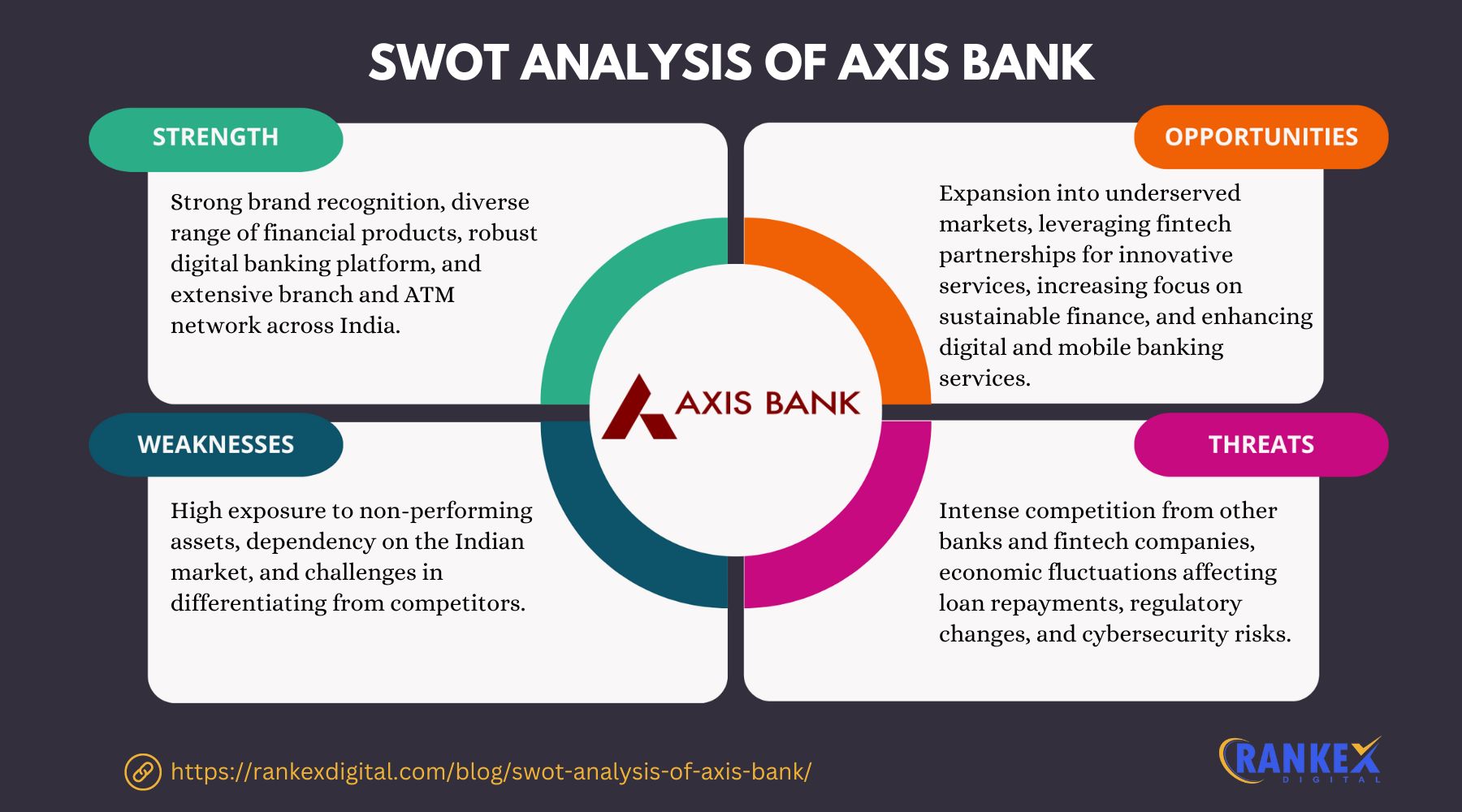
Strengths of Axis Bank
Extensive Network
Axis Bank has established a vast network of over 4,800 branches and 17,000 ATMs, ensuring excellent reach across urban, semi-urban, and rural areas in India. This network helps in increasing customer convenience and reinforces the bank’s presence nationwide, allowing it to compete effectively with larger banks like SBI and HDFC. The accessibility also aids in financial inclusion, bringing banking services to underbanked areas.
Robust Digital Banking
With a strong emphasis on digital innovation, Axis Bank has introduced cutting-edge mobile and internet banking platforms. The bank’s mobile app is highly rated for its user-friendly interface, security features, and functionality, including fund transfers, investments, and bill payments. This focus on digital services allows Axis Bank to cater to tech-savvy customers and meet the increasing demand for seamless online banking experiences.
Strong Corporate Banking
Axis Bank is recognized for its expertise in corporate banking, offering services like term loans, cash management, and trade finance. Its ability to serve large enterprises and mid-sized businesses positions it as a trusted partner in the corporate sector. Additionally, the bank’s advisory services for mergers and acquisitions further strengthen its standing in this space.
Diverse Product Portfolio
The bank’s broad range of financial products includes savings accounts, credit cards, personal loans, home loans, insurance, and investment products like mutual funds. This diversity allows Axis Bank to cater to varied customer needs, from individual retail clients to large corporations, ensuring a steady revenue stream from multiple segments.
Strong Brand Recognition
Axis Bank has built a robust reputation as a reliable and customer-centric institution. Its association with significant campaigns and sponsorships, such as IPL partnerships, has enhanced brand visibility. Customer trust in its products and services contributes significantly to its competitive advantage.
Weaknesses of Axis Bank
High Exposure to NPAs (Non-Performing Assets)
Like many Indian banks, Axis Bank has struggled with a high percentage of NPAs, which affects profitability and erodes investor confidence. Loan defaults, especially in sectors like infrastructure and real estate, have contributed to this challenge. Managing NPAs effectively is crucial for maintaining financial health.
High Operational Costs
Operating a vast branch and ATM network comes with significant costs, including maintenance, staffing, and security. These expenses, while essential for reach, reduce the bank’s cost-efficiency ratios compared to purely digital competitors like fintech firms.
Intense Competition
Axis Bank faces stiff competition from established private sector giants such as HDFC Bank and ICICI Bank, as well as government-backed banks like SBI. The competitive environment demands constant innovation and aggressive marketing, which can strain resources.
Limited International Presence
While Axis Bank has a strong domestic presence, its operations outside India are limited compared to global banking giants. This restricts its ability to tap into international markets and diversify its revenue streams geographically.
Opportunities for Axis Bank
Digital Transformation
As India continues to embrace digitalization, Axis Bank can expand its tech-driven solutions, including AI-based customer service, blockchain-enabled transactions, and advanced mobile banking features. Investments in digital ecosystems can enhance customer experiences and drive growth.
Financial Inclusion
Government initiatives like the Pradhan Mantri Jan Dhan Yojana provide an opportunity to bring unbanked populations into the formal banking system. Axis Bank can capitalize on these programs by offering tailored products such as microloans and low-cost accounts.
Strategic Partnerships
Collaborations with fintech companies and technology firms can help Axis Bank innovate faster. Such partnerships could lead to the introduction of new products like payment gateways, lending platforms, and digital wallets, which appeal to younger demographics.
Sustainable Finance
With increasing focus on environmental, social, and governance (ESG) standards, Axis Bank can position itself as a leader in sustainable banking. By financing green projects and offering eco-friendly products like green bonds, it can attract environmentally conscious investors and customers.
Threats to Axis Bank
Economic Fluctuations
Global economic uncertainties, such as inflation or recession, can reduce consumer spending and corporate borrowing, affecting the bank’s profitability. Axis Bank must maintain a diversified portfolio to mitigate these risks.
Regulatory Challenges
Frequent changes in banking regulations, such as tighter lending norms and higher compliance costs, can hinder operations. Non-compliance or delays in adapting to regulations could lead to penalties or reputational damage.
Cybersecurity Risks
As the bank relies more on digital channels, it becomes vulnerable to cyberattacks, phishing, and data breaches. Ensuring robust cybersecurity measures is essential to maintaining customer trust and operational integrity.
Market Competition
The rise of fintech disruptors and neobanks poses a significant threat. These new entrants often offer lower fees and superior digital experiences, attracting younger, tech-savvy customers away from traditional banks.
Competitors of Axis Bank
-
HDFC Bank
One of the largest private sector banks in India, HDFC Bank competes directly with Axis Bank in the retail and corporate banking sectors. It has a larger customer base and more branches across India. -
ICICI Bank
ICICI Bank, another major private sector bank, is a key competitor to Axis Bank, offering similar services in both retail and corporate banking, as well as digital banking innovations. -
State Bank of India (SBI)
SBI, India’s largest public sector bank, poses strong competition, especially with its vast reach in rural areas and government-backed initiatives for financial inclusion. -
Kotak Mahindra Bank
Kotak Mahindra Bank competes with Axis Bank in retail banking, wealth management, and corporate banking services, especially among high-net-worth individuals. -
IndusInd Bank
IndusInd Bank is another private sector competitor, offering a wide range of banking products and services, with a focus on digital banking solutions.
Conclusion
Axis Bank’s strengths, including its vast network, innovative digital banking solutions, and comprehensive range of services, make it a formidable player in India’s financial sector.
However, challenges such as high NPAs, intense competition, and regulatory risks require careful navigation.
By focusing on opportunities in digital banking, rural expansion, and international markets, Axis Bank can continue its growth trajectory and strengthen its position in 2025 and beyond.
Frequently Asked Questions
1. What is Axis Bank’s biggest strength?
Axis Bank’s biggest strength lies in its extensive retail banking network and digital banking innovations, which cater to a large and diverse customer base.
2. What are Axis Bank’s main weaknesses?
Axis Bank faces challenges with high non-performing assets (NPAs) and heavy reliance on interest income, which can impact profitability.
3. What opportunities can Axis Bank explore in 2025?
Opportunities include expanding digital banking services, tapping into rural and semi-urban markets, growing wealth management services, and exploring international markets.
4. What are the key threats to Axis Bank?
Threats include economic slowdowns, cybersecurity risks, regulatory changes, and rising competition from fintech companies and digital payment banks.
5. Who are Axis Bank’s main competitors?
Axis Bank’s primary competitors include HDFC Bank, ICICI Bank, State Bank of India (SBI), Kotak Mahindra Bank, IDBI Bank and IndusInd Bank.

